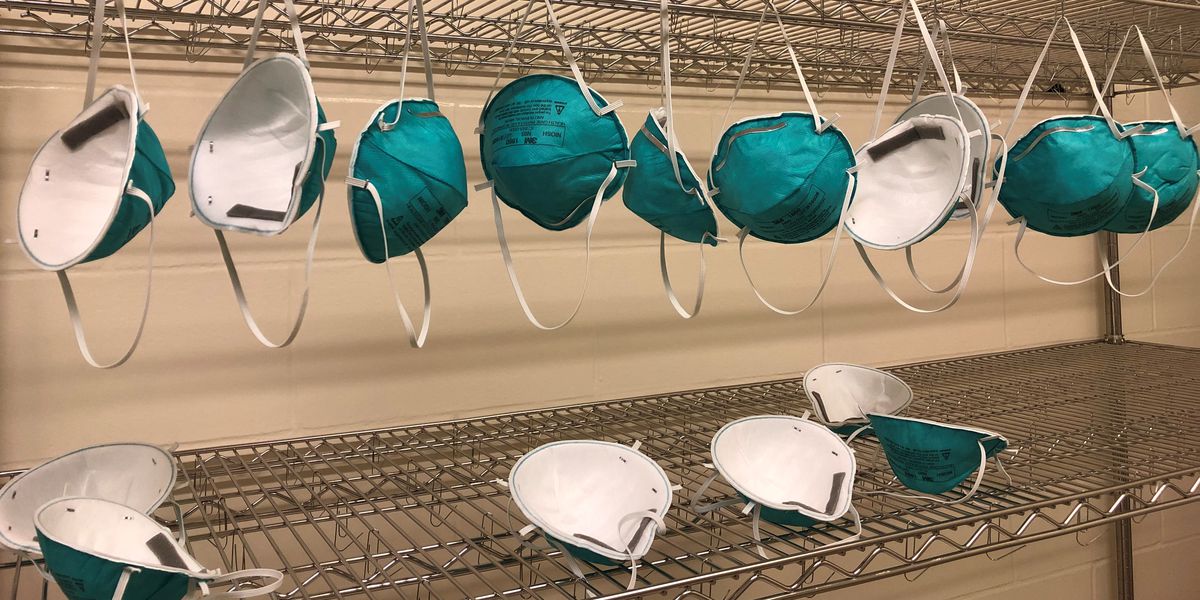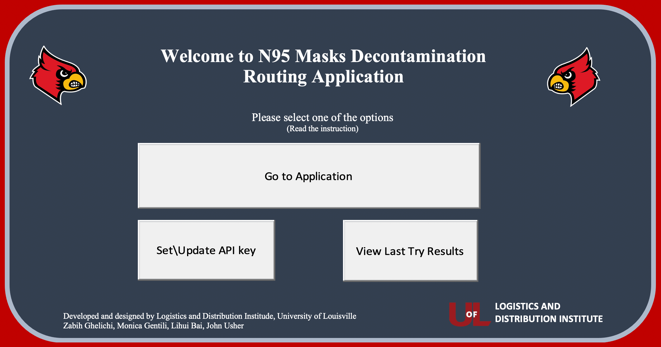Pick-up & Delivery Routes for N95 Masks Decontamination Program in Louisville During COVID-19 Pandemic
Project Type: Industry
LoDI Team: Zabih Ghelichi, Monica Gentili, Lihui Bai, John Usher
Period: May 2020

Source: University of Louisville
Overview
The University of Louisville (UofL) offers the N95 respirators decontaminate program, collecting the used N95 masks from local healthcare provides, decontaminating them and, returning the decontaminated masks to interested organizations. In conjunction with the UofL N95 decontamination program, LoDI developed a Decision Support System (DSS) to help determining optimal daily pickup and delivery routes for the program.
Purpose and Need
Given two distinct lists of pickup and delivery addresses, a truck driver needs to visit all the address in each list and pickup used masks or deliver the decontaminated masks. It is assumed that the pickup and delivery tours are carried out separately. For each list, the problem is to find the number of tours and a set of shortest paths to visit all locations. Since the capacity of trucks is limited, multiple tours may be required to serve all the locations in one list.

An on-demand routing application for the UofL N95 decontamination project is an essential component. Not only does the tool save considerable transportation costs, but also saves lots of time and lives as it helps to faster run the logistics of N95 masks. Even further, since the list of pickup and delivery addresses changes every day, an on-demand routing tool can improve the daily efficiency of the program.
Methodology
The applied model is a variant of Travelling Salesman Problem (TSP) formulation which determines the shortest tour and the order of locations to be visited in each tour. The proposed methodology includes the following steps:
1. Form the lists of pickup and delivery addresses in a given day and the corresponding demand (number of bins to be picked or delivered).
2. Calculate the distance between every two addresses in each list (form the distance matrices).
3. Determine the number of required tours for each list based on the truck capacity.
4. Solve the TSP model.
5. Visit the locations based on the output instruction.
Results and Impacts
The output of the designed tool i) calculates the shortest tour for a given set of addresses, ii) provides the order in which the locations should be visited, iii) computes the distance between every two successive addresses.
Acknowledgments
We would like to thank the two master’s students who worked on a preliminary version of the routing software:
Morgan Anne Tallio and Allison Christine Davis.
